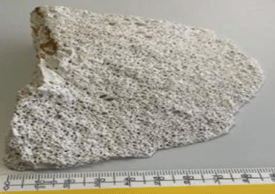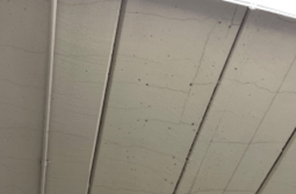- Date of Article
- Oct 24 2023
- Sector
- Commercial sectors
Flat roofs and reinforced autoclaved aerated concrete
Read our recently published article
The government has recently changed its advice surrounding Reinforced Autoclaved Aerated Concrete (RAAC) within buildings and the actions building owners should take if the material is identified.
Initially the DfE identified the risk period for buildings that were constructed between 1959 and 1989. Subsequent guidance from the DfE widened the risk period between 1950 and 1995.
The surveys undertaken prior to the DfE guidance being revised focused on flat roof construction due to the risk of collapse. The updated guidance recommends that any RAAC should be identified and inspection surveys not limited to flat roof construction. RAAC has been found within floor and wall construction and therefore the buildings bought into scope for RAAC identification surveys has dramatically increased.
A recently published article also confirmed RAAC being identified in the roof construction of a 90’s hospital. The roof was pitched and the implication is that pitched roofed buildings also need to be considered in a RAAC survey programme.
What is RAAC and why is it a problem?
RAAC is a type of structural lightweight concrete that was used in the construction of UK buildings from the 1950s, in mainly flat roofs but has also been known to be used within floors and wall construction, until around the mid-1990s.
The concrete mixture includes the use of waste materials, which is poured into a mould and placed into an autoclave to create a chemical reaction to give RAAC its distinctive aerated internal structure and lightweight properties.
RAAC sample and cracking to RAAC planks within a school (Department of Education, 2023)
Due to this however, RAAC is more susceptible to damage than traditional concrete. It is also known to have the following additional defects:
- Shear failure at the end of the plank from lack of reinforcement
- Corrosion of the steel reinforcement from water ingress
- Cracking across the plank
Since summer 2023, the government has noted that sudden collapse of roof has taken place even when the material was noted to be in good condition. They now believe it is “essential” to that any RAAC is identified. In the event that RAAC is identified within a building, mitigation measures should be out into place to ensure the safety of occupants.
If you have any concerns over RAAC, get in touch with our dedicated team of Building Surveyors to conduct a survey to establish the presence of Reinforced Autoclaved Aerated Concrete.



